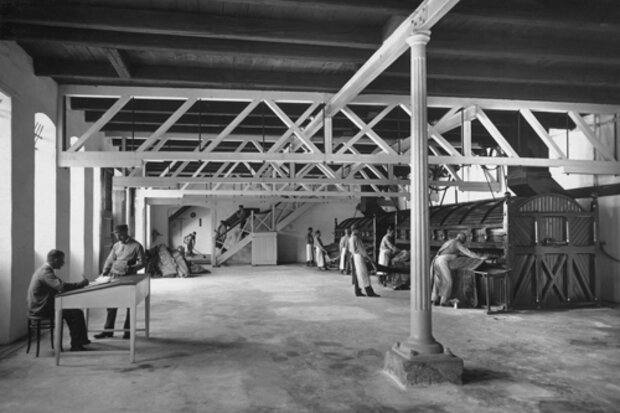The Zacherl Moth Damage Establishment in Vienna
In 1873, barely 200 years after the first Turkish siege, Emperor Franz Joseph I opened the fifth World Exposition in Vienna, after London and Paris. At the time, work was being done to complete the Ringstrasse, the epoch of the “Gründerzeit” had begun, there was a boom in trade, and the extension of the railway network brought distant destinations closer and closer, which also increased the flow of information. As a consequence of the Napoleonic campaigns, the influence of oriental culture grew increasingly important, not only in architecture, but also in design and lifestyles, as reflected in “Turkish rooms,” smoking salons, pavilions, and of course coffee-houses, although their history goes back to 1683. The “Oriental Quarter,” with a Persian house, a copy of the Ahmed Fountain, an ensemble of Egyptian buildings and the bazaar, was one of the highlights of the Vienna World Exposition. At this time, the so-called Zacherl Factory was built in Vienna. It specialized in the production of Zacherlin moth powder, made from dried, ground pyrethrum flowers imported from Georgia. Probably owing to the influence of the world exposition, but also as a consequence of a number of business trips taken by Mr. and Mrs. Zacherl to Georgia and what is today Turkey, the factory was given a new “corporate identity” at the end of the 19th century. In the style of Islamic architecture, the façade was structured with a raised central risalit and a two-story liwan (niche), which are framed by turquoise ceramic tiles. Coupled windows with cusped arches, an onion dome and minaret-like turrets contrast with Alhambra columns and serrated arches in the interior which, unlike the façade, imitates Moorish architecture.
Carola Dertnig uses this example of orientalist architecture in the Viennese Döbling district—which is now used, among other things, as a studio and exhibition space for contemporary art—to examine strategies for the appropriation of foreign cultures. After the study Learning from Las Vegas by Robert Venturi and Denise Scott Brown, it could be asked whether this orientalist formal language produced a “decorated shed” or a “canard.” In a certain sense, both are probably true. On the one hand, the designs of the Austrian architects gave the factory an oriental décor; on the other, the dome, turrets and shimmering tiles symbolize a kind of fairytale castle and give rise to the kinds of clichéd images that were the reason why the factory owner decided on this type of architecture, like donning some kind of costume. In a slide installation, Dertnig shows photographs that recount the history of the company, accompanied by a soundtrack. One hears a text that the artist took from the travel reports of Anna Zacherl. The often naïve descriptions are the expression of a genre that draws on literary models and is driven by the desire to authentically experience the Other. Carola Dertnig colors both the content and formal presentation of the company history with this private travel account. The slide presentation is a kind of performative installation: an archeological examination of the media behind a dream factory.
Eva Maria Stadler Exhibition: Tanzimat, Augarten Contemporary, 2010
